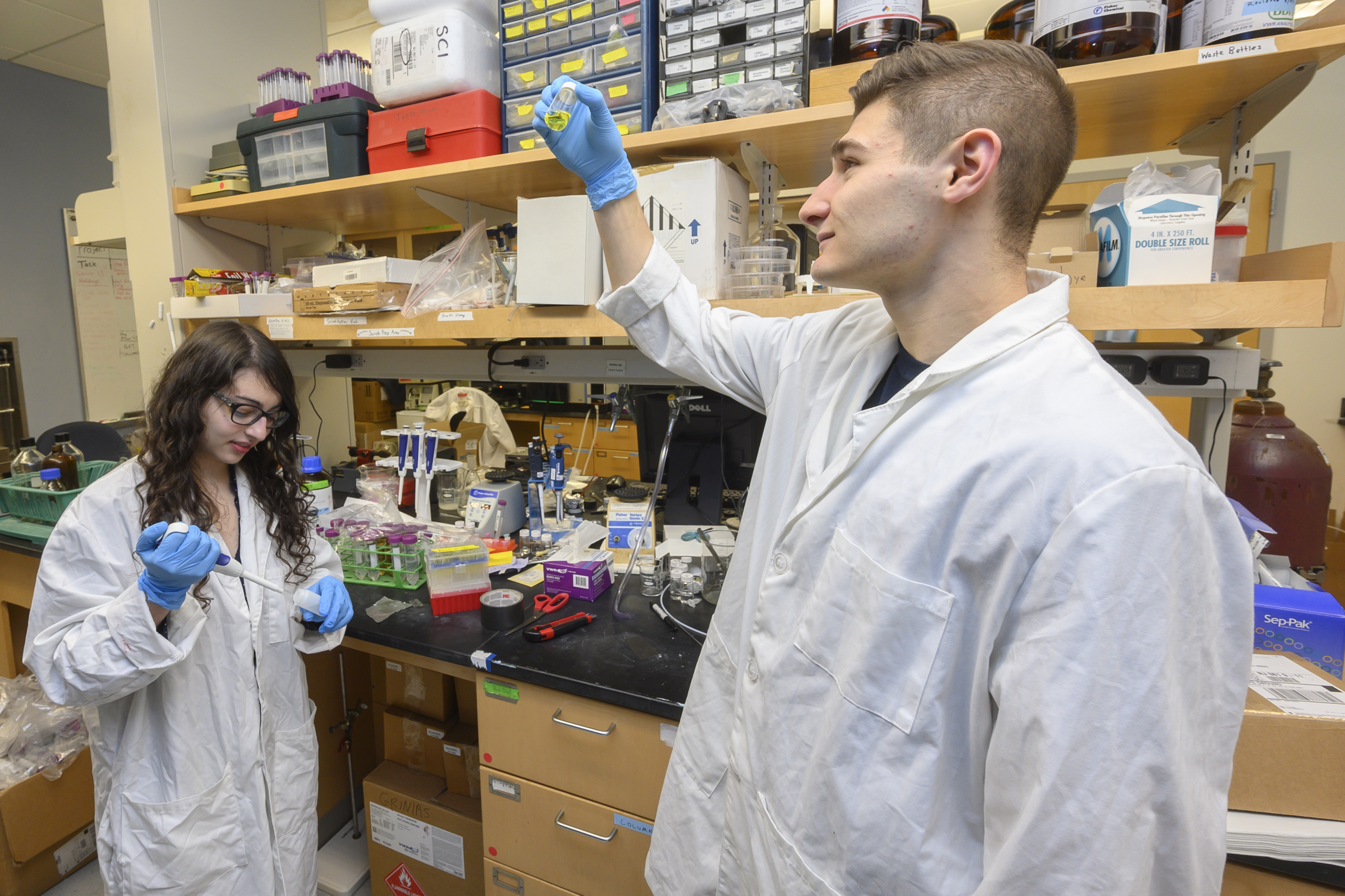Rowan’s rapid research growth is paying off for undergraduates
Rowan’s rapid research growth is paying off for undergraduates

As a student researcher, Sam Ricci works alongside faculty in a Rowan University lab, applying the lessons he’s learned in the classroom.
He’s gaining rich experience, and he’s getting paid for it.
Ricci, a senior biophysics major, is among a growing number of undergraduate students who are paid for their labors in the lab. Their work is supported through public and private grants won by Rowan faculty for specific projects.
That means students can spend more time exploring real-world problems before they graduate.
“I get to think about this stuff a little more independently, which is nice,” Ricci said. “That’s definitely unique to Rowan.”
Whether undergraduates’ research work is paid or not, access to such opportunities attracts talented students to Rowan, said Beena Sukumaran, Rowan University’s vice president for research. They also gain opportunities to travel with faculty to conferences to present their results.
Undergraduates participating in unpaid research can receive class credit for the work in some disciplines, Sukumaran said.
“A lot of students get drawn into research because they find it exciting, especially the opportunity to work with the faculty one on one, and to engage in the process of discovery and research,” Sukumaran said.
Last year, 466 undergraduate students at Rowan were paid roughly $2.5 million collectively, Sukumaran said. She expects those numbers will rise as more Rowan faculty win research grants.
When Dr. Nathaniel Nucci won a five-year National Science Foundation CAREER award earlier this year, he hired undergraduate students to help.
They aren’t just doing the grunt work, Nucci explained. Often, they drive the project, processing data, trouble-shooting problems and developing better approaches.
“When they go out for interviews and are able to talk about their research on an expert level, it’s a difference-maker in helping them get a job, get into grad school or get into medical school,” said Nucci, an assistant professor in the Physics & Astronomy and Molecular & Cellular Biosciences departments.
The amount undergraduate student researchers are paid varies from project to project, but Ricci said he typically spends 15 to 20 hours a week in the lab, working on a study to examine how breast cancer spreads in the body.
“If we can figure out how and why it spreads, we can possibly prevent that from happening, and it will be easier to treat the disease,” said Ricci, who is working toward a career as a biomedical researcher.
Melanie Padalino, a senior chemistry major, said the research opportunities she pursued at Rowan helped her choose a career path. She is working with her mentor, Dr. James Grinias, on a project to study how bacteria behave when moving through equipment such as medical stents and water filters.
“I realized through my work in the labs I could pursue a career in pharmaceutical development,” Padalino said. “I really want to make a difference, and I feel like that’s the perfect venue for me.”
Rowan’s labs provide an inclusive environment that encourages taking chances to make scientific breakthroughs, said Padalino, president of Women Inspiring the Next Generation of Scientists (WINGS), a student club.
“Having so many students with these opportunities is good, because the more people you have, the more diverse perspectives you can learn from,” Padalino said
Paid research opportunities allow students to pursue their passion, she added.
“In the classroom, we’re given the information, and it’s in the palm of our hand,” Padalino said. “But when you get involved in research, it opens up a whole new world, because you’re forced to think outside the box.”